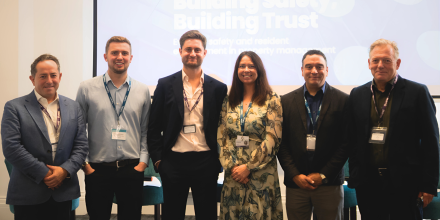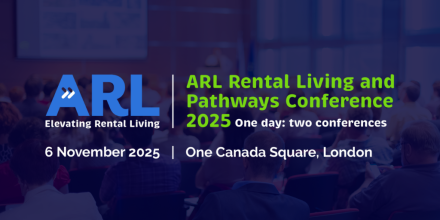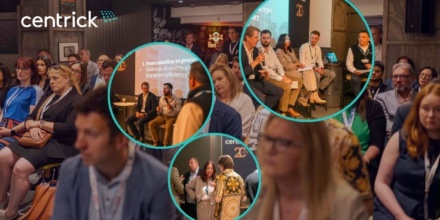What is Build To Rent?
The way people live is changing, and whilst it may seem imperceptible and gradual, habits and preferences are shifting considerably. A combination of low supply and increasing demand – the UK is expected to hit the 70 million population mark 11 years early – has been impacting the focus and attention on affordable, high-quality homes. More than ever and across every demographic, renters and residents expect more from their homes, more from their communities and more from the spaces that they live, work and play.
In response to changing lifestyles and demand, the residential landscape in the United Kingdom is in the throes of transformation and has seen a swift rise of Build to Rent (BTR). BTR developments consist of rental-only units, owned by a single body and offer a very different type of lifestyle when compared to their PRS counterparts. These properties are designed to accommodate renters’ needs and lifestyles, with a range of amenities that might not be available in conventional rental properties. These include communal spaces, fitness centres, concierge services and flexible lease terms. However, the concept goes beyond just having a gym or shared working area and instead provides a sense of community for residents. So, when you ask ‘what is build to rent’, it’s more than just a housing solution – it’s modern living at its finest.
The Build To Rent Landscape
Now we’ve covered ‘what is build to rent’, we ought to understand what the existing BTR landscape looks like. Historically, the UK housing market has been characterised by traditional home ownership and the Private Rental Sector (PRS). However, the concept of build-to-rent is not new: from the 2000s’ cities within the USA and Germany saw an increase in luxury urban rentals but it wasn’t until 2010 that it gained more notability in the UK. Early BTR developments in the UK were often referred to as “build-to-let” properties, which involved individual landlords building large rental apartment complexes. This has now evolved into the modern-day BTR complexes across the UK. These are professionally managed and so provide a hotel-like experience whilst still feeling at home.
Currently, there are 92,140 completed BTR homes, with a further 59,043 homes under construction. (Savills). These properties started gaining popularity in London but are now beginning to pop up in urban areas which are currently experiencing an influx in popularity, for example, Liverpool, Birmingham and Manchester. It is abundantly clear that BTR is on the rise, continuing to grow, and is here to stay.
Who lives in Build To Rent properties and why?
Build-to-rent is suitable for a diverse range of people. From young professionals who want to stay in the city they studied in, retirees who want to downsize and experience extra comfort and luxury, and families who are looking for a safe and secure urban location. BTR offers flexibility, meaning that residents can adjust to changing circumstances without committing to the long-term costs associated with owning a home. This, paired with the steadily rising population of the UK, means BTR offers a viable solution to the housing shortage issue many cities and urban centres in the UK are currently suffering from. But what do these tenant demographics want from their homes, and what do developers need to know about providing BTR units for the future that answer their resident’s wants and needs?

The Love Where You Live research highlighted that tenants have a wide range of preferences, with clear inclinations based on age and location. However, Energy Efficiency was ranked the most important feature across the country, with 83% of tenants stating that this was “important or very important” to them. This demonstrates that as global awareness of climate change and sustainability increases, there is a growing emphasis on eco-friendly and energy-efficient housing solutions which BTR can provide.
The Future Of Build To Rent
BTR can provide far more than just energy-efficient property solutions – these types of rental units are poised to reshape the future of the UK housing market. This is especially the case as homeownership is becoming more challenging, with average house prices rising over the past decade by 70% nationwide. This means that the average age for first-time homeowners is at an all-time high at an average of 37 years old. As such, more and more people are changing their preferences for what they call a home, and are now looking for more accessible options.
New data from the Love Where You Live research highlights that the rental sector continues to be an accessible living solution for most Brits, with 19% of all households opting for rental accommodation and in the younger generation of 25-34-year-olds, 39% currently live in PRS housing. This reliance on renting as opposed to unattainable home purchasing is putting a heavy focus on the PRS and BTR landscape.
As more people opt for rental properties, cities continue to expand and populations grow, the need for affordable, high-quality rental accommodation remains paramount. BTR stands poised to address these challenges by helping people create a sense of home without actually owning one, with home ownership becoming increasingly difficult for many first-time buyers.
These properties are also becoming increasingly popular with investors, with £858 million being invested in 2019, which then grew to £4.5 billion in 2023 (Savills). These buildings offer living solutions that are high quality, energy-efficient, and innovative due to the large scale of the investment. According to a recent Multi-Housing Report, the expected capital allocated to the BTR industry by 2028 will be £102 billion. This would suggest an increase in these types of buildings nationwide.
Furthermore, there is an increase in government support for BTR within the UK. In the Montague Report, the government recognises the potential of BTR as a solution to the housing crisis. In recent years, this has led to significant policy changes and incentives being introduced to encourage BTR development.
BTR is poised for growth because of the living standards and community feel it can present compared to other alternatives. These units offer superior facilities than older PRS builds, and its residents frequently view it as having good financial value. Data shows that 75% of BTR residents believe their property is good value for money compared to only 53% of PRS tenants (BTR news). This demonstrates that there are huge opportunities for BTR developments to overtake PRS and help residents celebrate a higher level of satisfaction with their homes.
Build to Rent as an institutionally backed residential sector is evolving at a rapid pace with no signs of slowing down. In a relatively short period, BTR has progressed from a concept to an organised market that is experiencing increased funding and construction nationwide. As we look ahead, BTR appears ready for significant growth over the next decade as tenant interest, the UK population and investor confidence continue to rise and fuel its growth.
Want to find out more about the way Centrick’s team approaches the BTR landscape? Our dedicated VICI team has an abundance of experience creating, managing and improving BTR developments across the country – you can find out more on our VICI hub, or by contacting us below:









